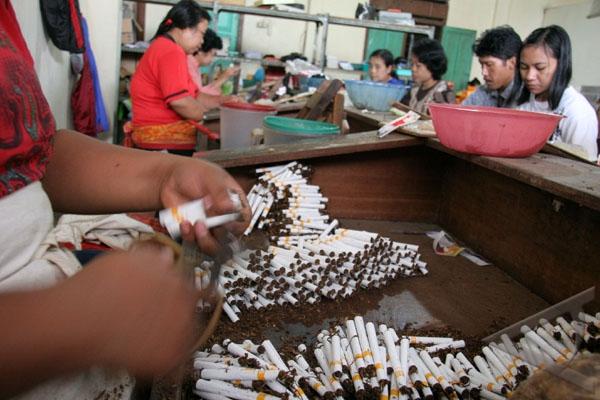Gov't Sets Conservative Excise Target 2017, Incentive for Cigarette Producers?
Bareksa • 26 Aug 2016

Karyawan rokok di pabrik rokok golongan kecil (Antara foto/Arief Priyono)
Taxation Directorate General looks for new sources to reach 2017 excise target
Bareksa.com - The government proposes more “realistic and credible” budget for fiscal year 2017 with taxation policy becoming the supporter of economic growth without burdening industries. Target revenue from excise – currently contributed mainly by tobacco industry – is deemed conservative, as analysts see this an incentive for cigarette makers that previously have been a ‘cash cow' to secure state budget.
In the 2017 state budget draft, government expects excise revenue to reach Rp157.2 trillion, up not more than 6.1 percent from the target set in 2016 revised state budget. In 2016 revised state budget, the government set revenue from excise as much as Rp148 trillion, 15 percent hike from the achievement in the previous year.
Based on Ministry of Finance data, the annual growth of excise revenue from 2010 to 2015 is at least 9 percent. A report from Citi wrote that the compound annual growth rate of excise in the past 10 years is around 14 percent. Thus, the expected 2017 growth is the lowest in the past six years.
Chart: Excise Revenue Growth in State Budget 2010-2017
*based on target in revised budget 2016 and **draft budget 2017
Source: (Ministry of Finance, Bareksa)
Without relying much on the tobacco excise, the Taxation Directorate General will also be looking for new sources to achieve the target income. One option is to impose excise into plastic bottles and packaging. Currently, a draft regulation has been submitted to the House of Representatives (DPR) and ready to be discussed.
This extension of tax objects is regarded as a positive sentiment to the tobacco based industry. Statistics show that cigarette excise contributed more than 90 percent of total excise revenue for the state. Moreover, tobacco industry has secured more than 8 percent of the country's tax revenue in last 5 years.
Thus, given the slighter growth and extension of tax sources, cigarette excise tax rate is expected not to increase significantly in 2017. Even, it is possibly lower that before.
Citi research sees that this is positive for cigarette players such as PT HM Sampoerna Tbk (HMSP), and PT Gudang Garam Tbk (GGRM), as excise and pricing are the two major factors for earnings.
"With a more moderate excise tax increase, the companies will have more room to increase pricing further, which is the primary earnings driver," Citi Analyst Ferry Wong says in the report.
Moreover, another research sees potential higher profitability for the cigarette makers. "In our view, each 1 percent lower excise can boost profit by 3 percent," Reggy Susanto, Samuel Sentana & Ryan Daniel write on Deutsche Verdhana research report August 16, 2016.
Beside profit improvement, lower excise rate could also be an opportunity for manufacturers to minimize the increasing price of cigarettes, in order to boost volumes which have been flat since 2014.
Sampoerna, holding share of 35-percent Indonesian cigarette market, in 2015 sold only 109.8 billion sticks, similar amout from a year earlier 109.7 billion sticks. At the same time, its competitor Gudang Garam in 2015 only sold 78.6 billion cigarettes, down 2.4 percent from 80.6 billion sticks in 2014.